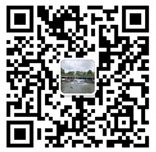
Email:info@yahongenergy.comTel: 86-574-5657 8899
News
Solar Panel Classification
Classification of solar panels
Crystal silicon battery board: polycrystalline silicon solar cell, monocrystalline silicon solar cell.
Amorphous silicon battery board: thin film solar cell and organic solar cell.
Chemical dye panels: dye-sensitized solar cells.
(1) monocrystalline silicon solar cell
The photoelectric conversion efficiency of monocrystalline silicon solar cells is about 15%, and the highest reaches 24%. This is the highest photoelectric conversion efficiency of all kinds of solar cells, but the cost is very high, so that it can not be widely used. Since monocrystalline silicon is generally encapsulated with toughened glass and waterproof resin, it is durable and service life is generally up to 15 years, up to 25 years.
(2) polycrystalline silicon solar cells
Polycrystalline silicon solar cell production process and monocrystalline silicon solar cell is similar, but the photoelectric conversion efficiency of polycrystalline silicon solar cell is to reduce a lot, the photoelectric conversion efficiency is about 12% (July 1, 2004, Japan SHARP market efficiency for 14.8% of the world's highest efficiency polycrystalline silicon solar cell). From the cost of production, it is cheaper than monocrystalline silicon solar cells, and the materials are easy to manufacture, save electricity and lower total production cost. In addition, the service life of polysilicon solar cells is shorter than that of monocrystalline silicon solar cells. The monocrystalline silicon solar cell is also a little better than the performance price ratio.
(3) amorphous silicon solar cell
The amorphous silicon solar cell is a new type of thin film solar cell in 1976, making it a completely different method with monocrystalline silicon and polycrystalline silicon solar cell, greatly simplifies the process, little siliconmaterial consumption, lower power consumption, its main advantage is also power in low light conditions. However, the main problem of amorphous silicon solar cells is the low efficiency of photoelectric conversion. The international advanced level is about 10%, and it is not stable enough. With the extension of time, the conversion efficiency of amorphous silicon solar cells decreases.
 CN
CN EN
EN

